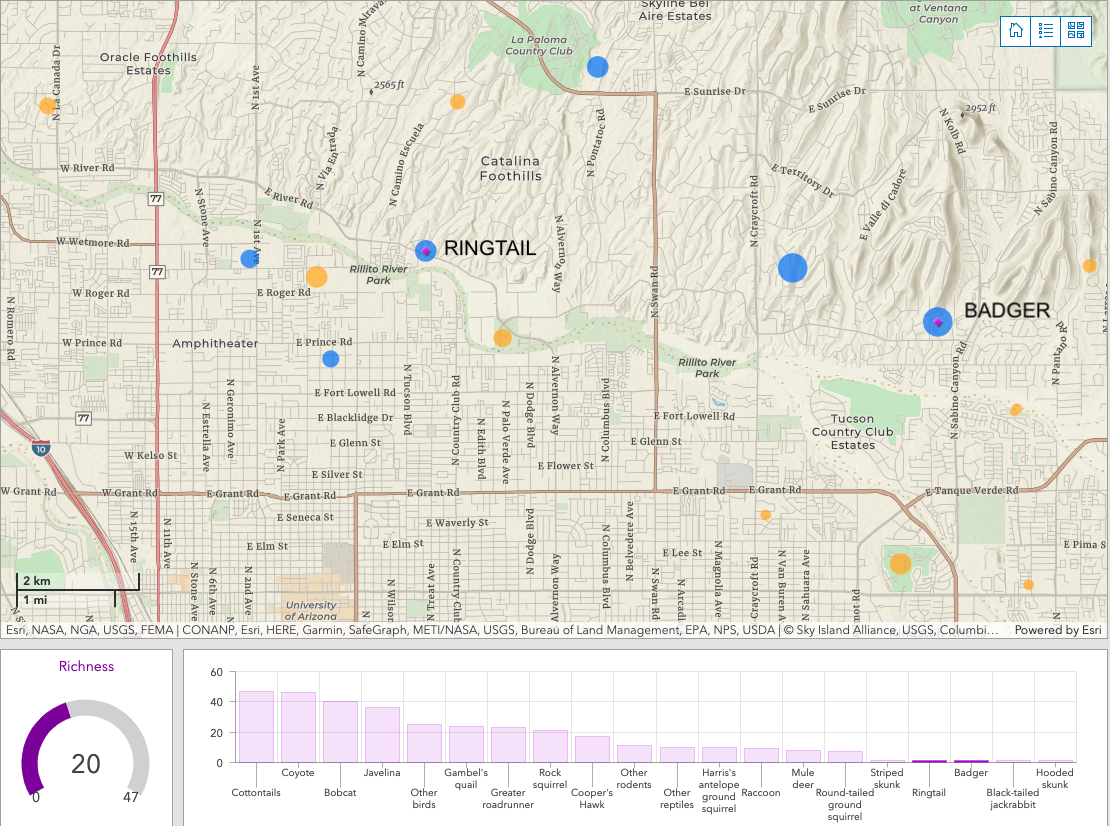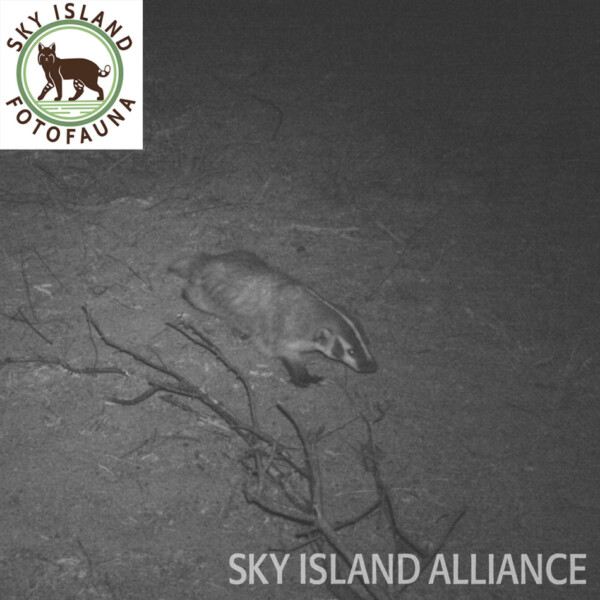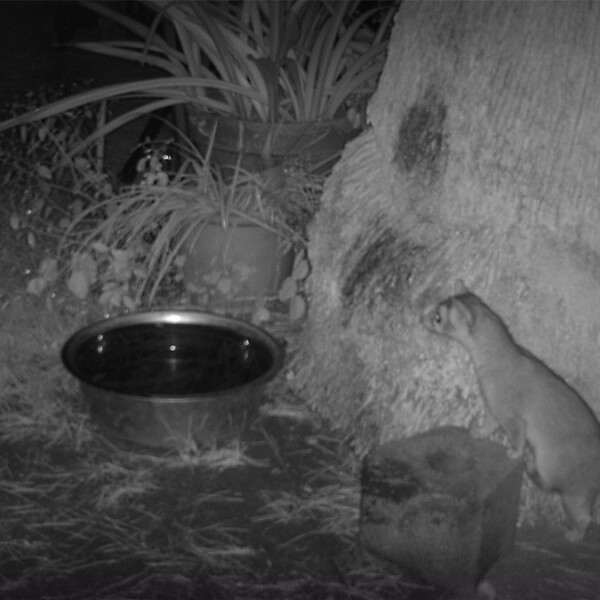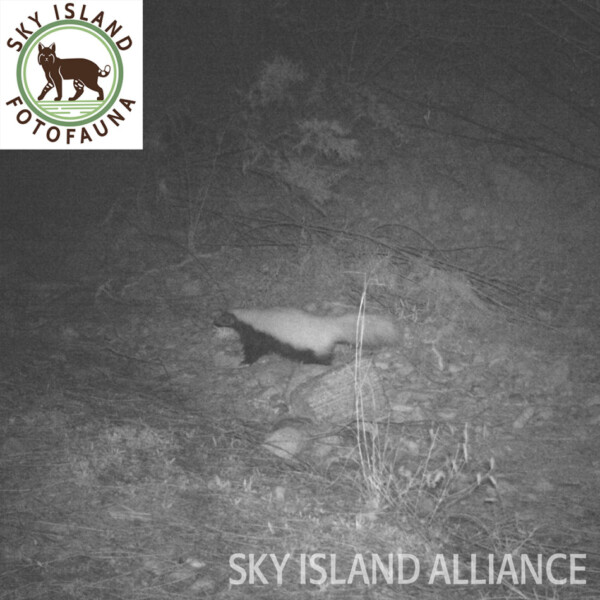When I first moved to Tucson and found a badger footprint outside one summer morning, I was shocked — I had no idea my neighborhood had badgers! Now with the first-year results of Sky Island FotoFauna wildlife monitoring data available, you too can discover which species live in your local area.
Explore our new FotoFauna Dashboard to tour the Sky Island region and see how many different species are present across locations in Arizona and Sonora, Mexico. As you zoom in, you’ll see individual camera sites; to protect privacy, these are approximate locations within 1,000 m or ~2 football lengths of the actual camera placement.
[FotoFauna First Year Results—Species by the Numbers]
Image caption: In this area of midtown Tucson, 20 different species have been detected so far on the FotoFauna cameras distributed in this urban area. The blue dots represent camera sites near water and the yellow dots represent cameras further away from water. The sites (approximate locations) with ringtail and badger are highlighted with purple dots.
The size of the location marker correlates with how many species have been detected there (larger circle means more species detected) and whether there is water close by to the camera (blue circles have drinkable water within 15 meters).
The purple graph below the map scales with the map view, so it will reflect the frequency of species detected in the local area you’re exploring. If you click one of the graph bars to highlight a species, a purple diamond-shaped marker will pop up on the map to show where that species was documented. Alternatively, select a location from the green bar graph to the right to highlight just the cameras and species found in that neighborhood.
One of staff favorite surprises in the species distribution data so far is learning that ringtail—a secretive cousin of raccoon — is present in midtown Tucson. On the eastern side of this area, badger has been detected, and other species like hooded skunk, black-tailed jackrabbit, and bobcat appear to use the Rillito River as a critical corridor through the urban landscape.
Enjoy exploring the distribution of species across the region. While you look around, we hope you think about how amazing it is that communities on both sides of the U.S.-Mexico border share so many of the same species.
As the FotoFauna community and dataset grows, we hope you and your neighbors will be able to rely on FotoFauna to inform and support conservation projects in your local area.




